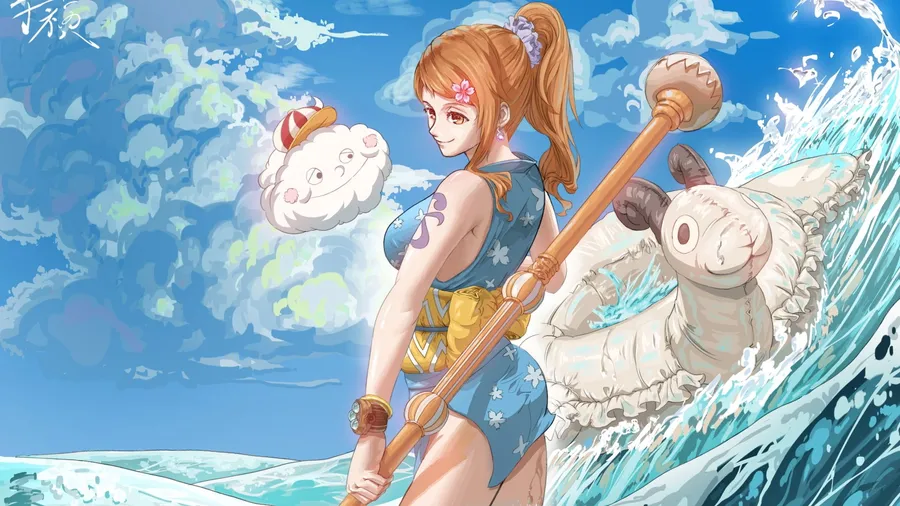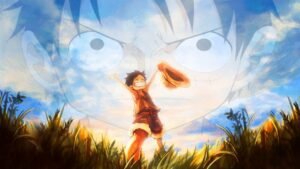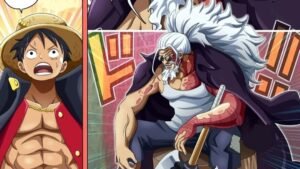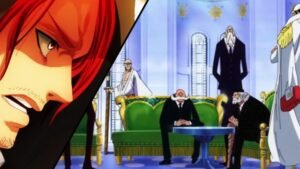Nami is one of the original Straw Hat members and has been part of the story for over 25 years. Yet, we still know very little about her past. Or do we?
In my opinion, Oda has provided us with a lot of clues up to the current chapter (1124). By looking closely at patterns, hints, and foreshadowing, it seems clear that Nami could be one of the most important characters in the entire series, potentially connecting Joyboy, Nika, the Lost Century, and, most notably, Imu.
Let’s first focus on the key features of Nami’s character:
- She has a strong connection to water. This is obvious from her incredible sailing skills, but we’re talking about someone who, as a child, could draw deep-sea maps that amazed even the fish-men. At times, it feels like the sea is almost an extension of her body. Also, I don’t think Nami’s many bath scenes are just fanservice in a story that pays such close attention to detail.
- Although she isn’t a fighter, Nami is skilled with Haki. She endured Ulti’s headbutts in chapter 995, sensed Saturn’s attack in chapter 1113, and even scared Jinbe with Conqueror’s Haki in chapter 1058.
- Her dream, which is often overlooked, is to create a map of the entire world. This is particularly interesting considering the world is sinking and the land is constantly changing. But we’ll get back to that soon.
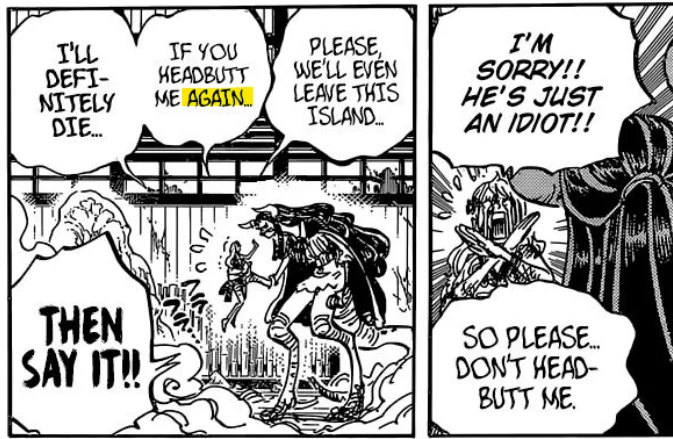
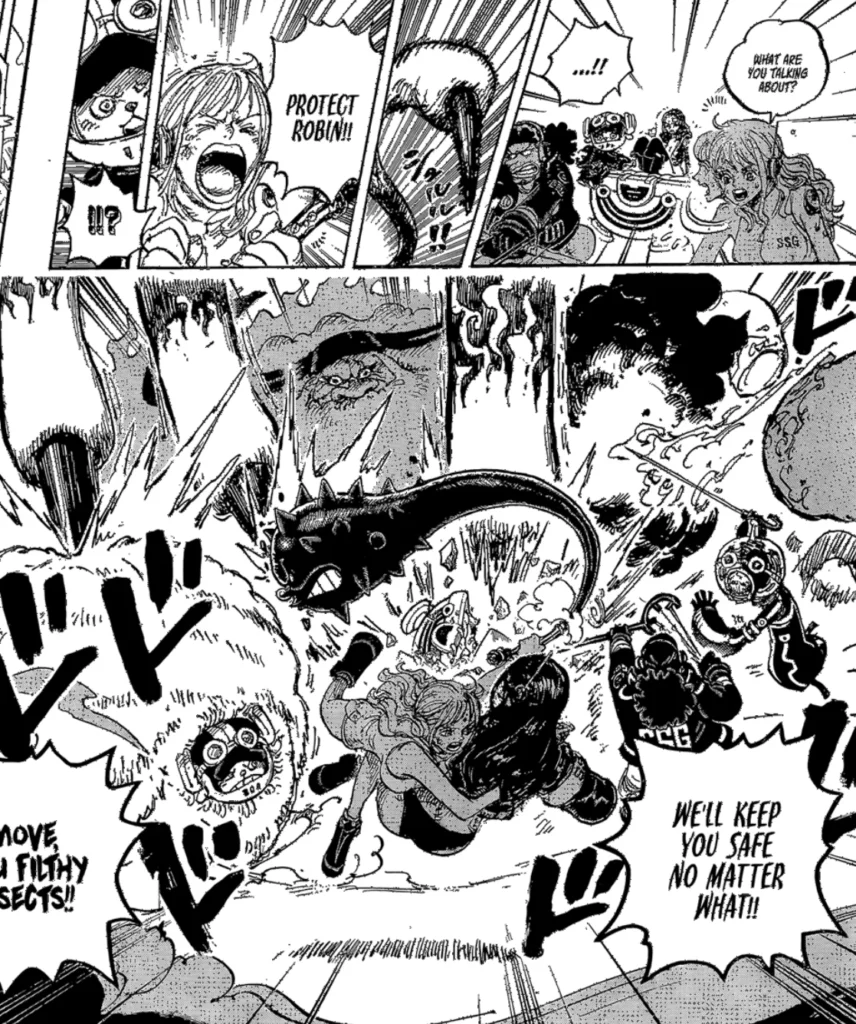
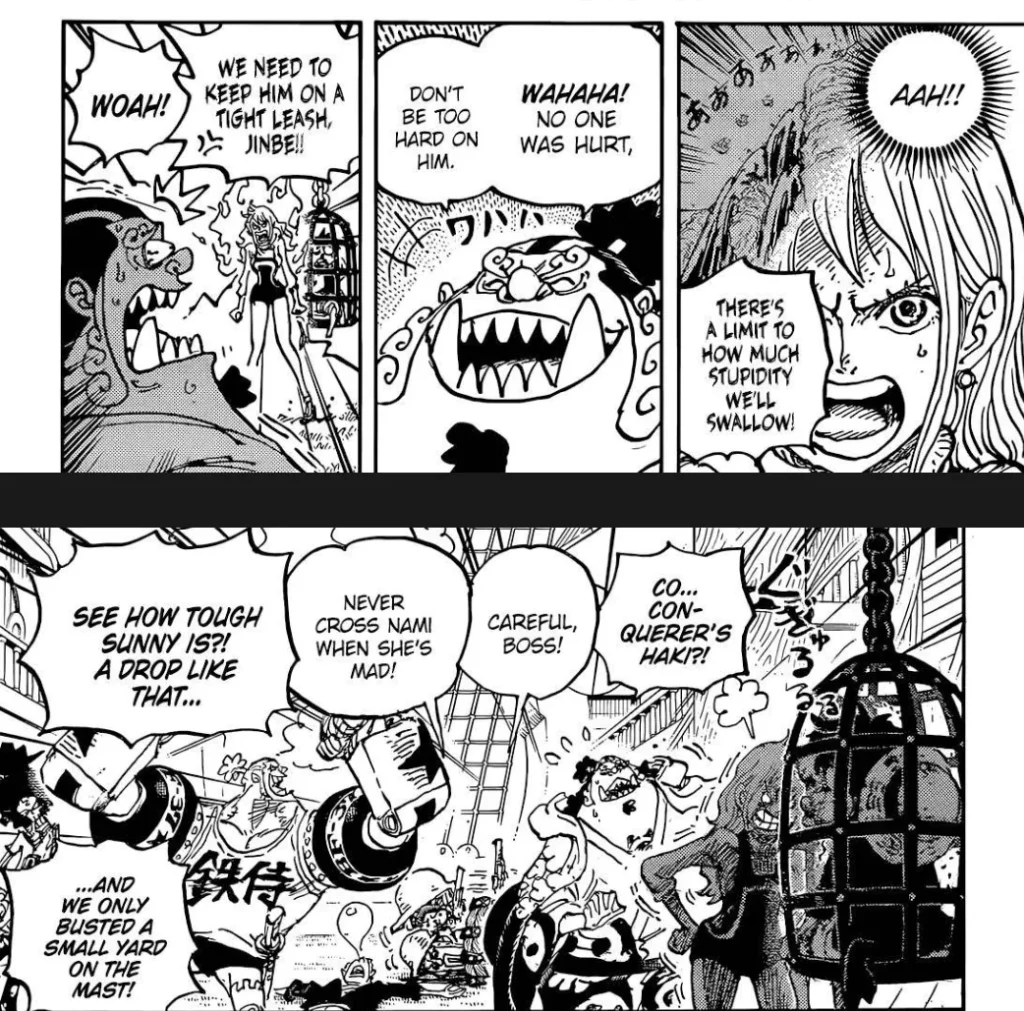
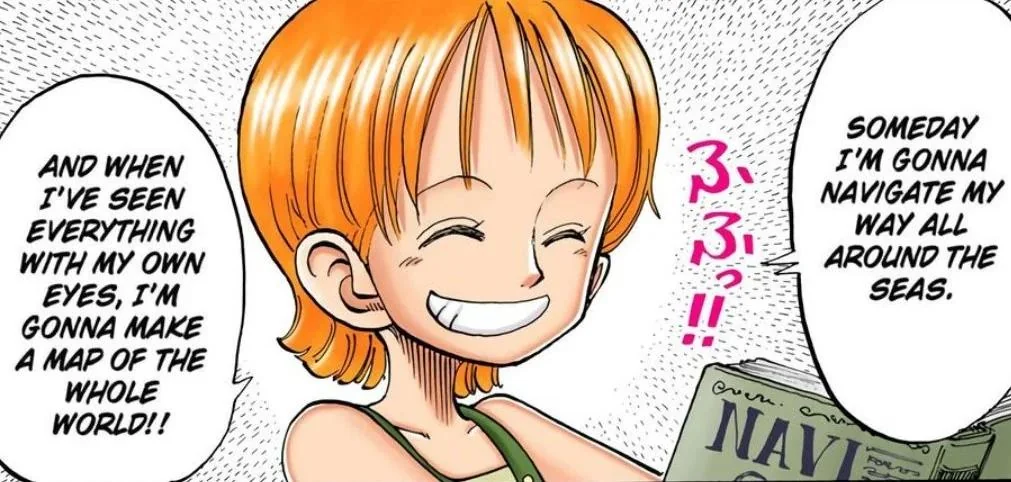
But what are the possible links between Nami and Nerona Imu?
- First, let’s consider the name. We don’t actually know if “Nami” is her full name. Just as “Gold Roger” was really “Gol D. Roger,” it’s possible Bell-mère saw “N. Ami” somewhere and decided to call her “Nami.” If we assume her full name is “Nerona Ami,” we can draw some interesting parallels between her and Imu. Besides the similarity in the names “Imu” and “Ami,” the word “Imu” translates to “shun,” “avoid,” or “detest,” and sounds similar to “Umi,” which means “sea.” Meanwhile, “Ami” can mean “beauty,” “ocean,” or “net” in Japanese, all of which relate to feelings and water. Interestingly, if you combine “Ami” and “Imu” into “Amimu,” it forms a female name that means “Apricot Tree + Hope/Wish/Desire + Sprout/Bud.” This brings to mind certain details, like Cocoyasi Village’s trees and Imu’s garden.
- Then, there’s the Queen motif. Imu’s association with royalty is straightforward, given that they have been shown sitting on the Empty Throne. For Nami, this connection is subtler, but she has appeared on several cover pages with crowns. For instance, color spreads 1, 733, 921, and 1113 all feature her with crowns. There’s also the detail of her stealing a crown from some pirates in her first appearance.
- Additionally, the katakana for “Nerona” can be combined to form the kanji character 神, meaning “God.” Imu resides with the Gorosei and the Celestial Dragons, who refer to themselves as gods. The closest Nami has been to this kind of character was Enel, who even allowed her to accompany him. Moreover, similar to how Sanji was called “Prince” before his royal lineage was revealed, Nami has been referred to as a “Goddess” on several occasions.
- Lastly, the number 16 has significant connections to Imu, the Celestial Dragons, and ancient weapons. Coincidentally, Nami’s first bounty was also 16 million berries.
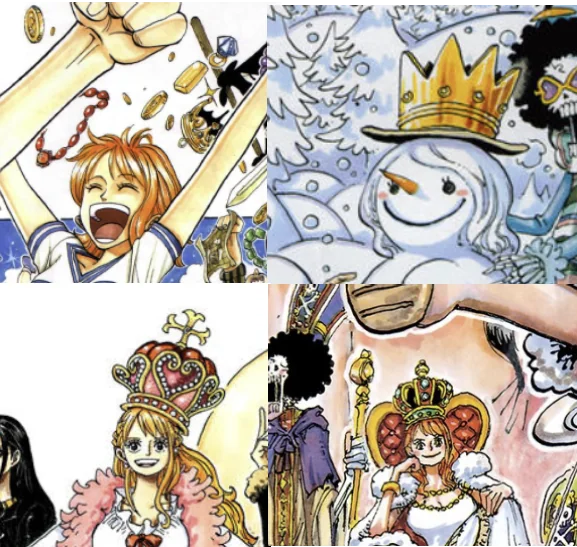
The world is sinking!
Vegapunk recently confirmed this, along with the fact that the war from the Void Century is still ongoing. My interpretation is that the World Government is behind this sinking. Perhaps they want some kind of cleansing, or maybe there’s another reason. But it’s important to remember their flag: five connected dots.
If we assume the world started sinking centuries ago, the shape of the land would have been very different from what it is today. What symbol would an institution that supports this sinking choose? Likely, something that reflects the shape of the sea. In this context, the World Government’s flag—with its five connected dots—could symbolize the five seas: North, East, West, South, and the All Blue in the center, which might represent a sea that connects all the others, sharing fish and resources from each.
In a sinking world, a valuable skill would be the ability to draw accurate maps to track how the land changes. We’ve already discussed Nami’s exceptional cartography skills, but what about Imu? We have seen Imu removing Lulusia from a large map. Perhaps Imu’s role isn’t to decide which islands to sink, but to document the process. We don’t know for sure yet. But we do know that Nami’s dream is to draw a map of the world, which could be seen as a metaphor for wanting to decide the shape of the land.
And what if we were already given a hint about a future Mary Geoise arc in the Arlong Park storyline?
We recently learned that Joyboy and Nika are separate entities. On one hand, we have the “Sun God” Nika, and on the other, Joyboy, the first pirate and a natural enemy of the Gods, who wears a straw hat.
If we think back to Arlong Park, we see a Nerona (Nami) enslaved by a sun-themed superior race (the Fish-Man Sun Pirates—Arlong and his crew even have sun tattoos). A straw hat (Luffy) fights for her freedom, gives her his hat, and destroys all the maps she made while in captivity.
So, what if Imu experienced a similar story? We might imagine a Nerona (Imu) enslaved by a sun-related ruling class (the Gorosei, whose names are planets orbiting the sun). A straw hat (Joyboy) then fights for their freedom, giving them his hat. But this time, Joyboy loses, and Imu remains trapped, holding onto Joyboy’s giant straw hat.
I don’t think Imu is the final boss of One Piece—after all, we haven’t even seen a real Celestial Dragon yet. It feels like there are still many pieces missing, such as the possibility of a Water Logia fruit user who might try to drown other Devil Fruit users in an attempt to eliminate the Will of D.
But who better than Oda himself to hint at this? Just look at the color spread from chapter 1036. You’ll see a mysterious Nerona lady inside a castle in a sunken city, watching her friends who are outside. You can also notice the details on Luffy’s clothes, which say, “Every drop in the ocean counts,” and Brook’s shirt that reads, “High Tide.”
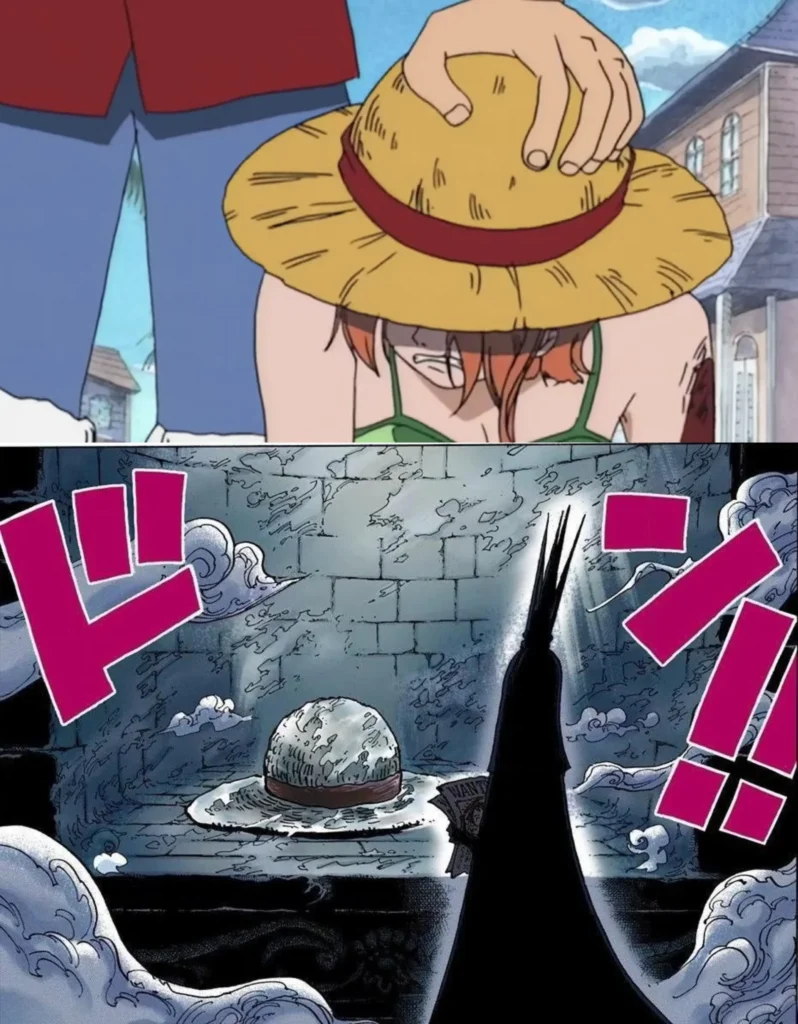

But what about those big, scary eyes?
This is such a unique feature for Imu, but a few other characters have them too: Zunesha, Hakuba, and Mihawk. I believe these eyes might indicate someone who has received immortality from a user of the Ope Ope no Mi. Each character likely has their own story, but I don’t think it’s a coincidence that we know so little about their pasts, and most of them seem to have been alive for hundreds of years.
One last point I’d like to discuss is the recurring motif of whales.
There’s a well-known theory that whales are linked to progress in the journey to finding the One Piece, but I’ve noticed that most appearances of whales happen when Luffy and Nami’s paths cross again. There’s the whale fountain in Orange Town when they first meet, Laboon after they split in Loguetown, the whales when diving to Fish-Man Island after the time skip, the whale tree at Zou when Luffy returns from Dressrosa, and even Jinbe (a whale shark) when they’re captured in Whole Cake Island.
Color spread 471 is also interesting because it features a whale with a crown near Nami.
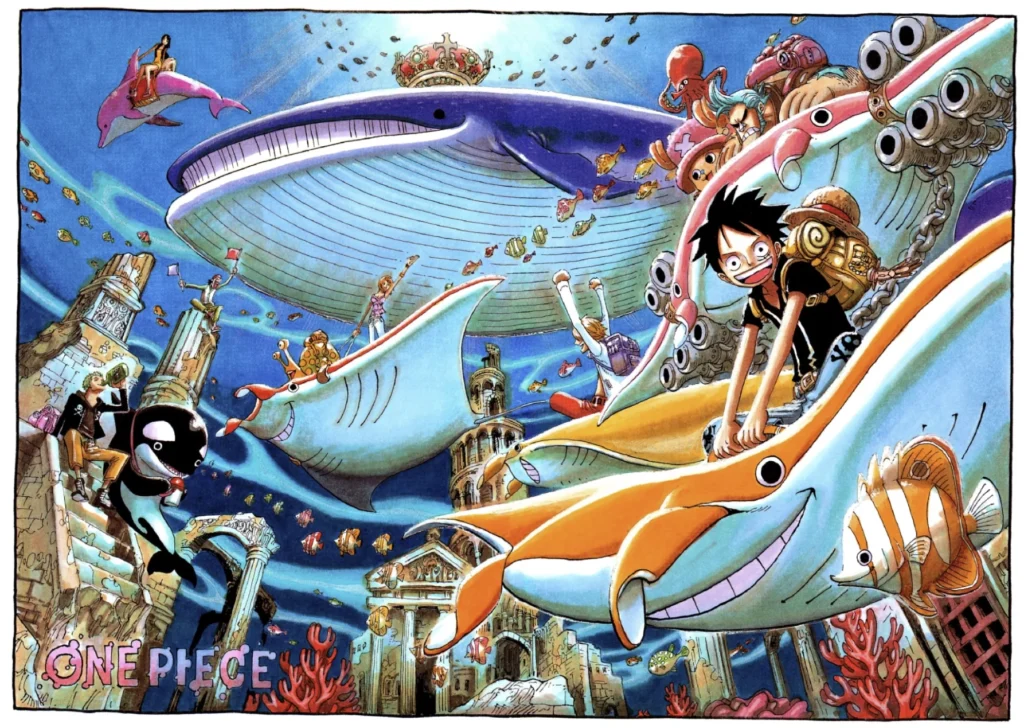
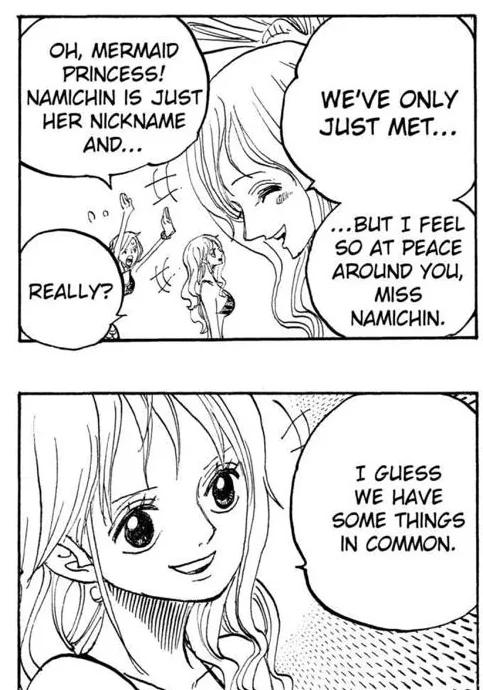
I’m not entirely sure what to make of Whitebeard’s Moby Dick or how it fits into this theory, but perhaps it will be explained in the future. It’s also worth noting that there might be a connection between Nami and Shirahoshi.
